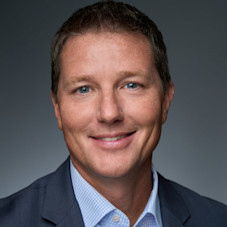New Business Models in Manufacturing Technology Part 1 of 5
With the emergence of many new business models in the manufacturing technology (MT) ecosystem, AMT spoke to several member companies to learn about their paths to success. We learned that each of these innovators identified a need in the market that was not being met by existing solutions and turned this into a business opportunity. Another recurring theme was that the company founders or senior executives had broad sets of skills that combined proven business experience with technical know-how in order to develop a successful market strategy.
Benny Buller, CEO and founder of Velo3D, metal AM market entrepreneur and leader, did not hail from a manufacturing background. “Benny founded Velo3D because he wanted to make it easier for people to enter additive without redesigning their parts,” said Joyce Yeung, director of marketing, Velo3D.
Velo3D brought together innovations in software, hardware, and process control to create the industry’s first support-free manufacturing solution for 3D metal printing. Dubbed SupportFree, this process enabled unlimited design innovation by reducing the need for support structures in AM. This new category within laser powder bed fusion allows customers to use AM for direct part replacement, a completely new application.
The need for support structures in AM has been a major technical issue that has needed to be considered when a part is designed, requiring the designer to either omit overhangs that might droop during the additive build or, when this is not possible, to add in support structures to buttress those features. Adding supports can also entail redesigning a part to offer access to those features so they can be removed later via machining or manual postprocessing. The impossibility of removing supports from many parts is why many existing part designs are not transferable to AM.
“We believe that printing your parts ‘as is’ is the path with the lowest amount of friction for mass adoption of additive. When we have conversations with some of the biggest OEMs, this is exactly what they say they want. They don't want to redesign, they don’t want to integrate variables into their process, and they don't want to enter that vicious cycle of prototyping that is often associated with new product development,” said Yeung.
Design for AM must follow a strict set of rules; for example, you can’t have shallow angles (anything under a 45-degree angle must have support structures with today's processes), and you can't have wide inner diameters. But the Velo3D process lets customers print with very shallow angles and print tall, skinny parts with higher first-time yield.
To date, Velo3D has raised $110 million from VCs and is starting a new Series D round. It has two aerospace OEMs in serial production, and one of them has 12 machines. AM Industry analyst group SmarTech Analysis, which grades metal AM firms on the strength of their portfolio of patented intellectual property, recently awarded Velo3D the top assignee position across the metal AM landscape.
Yeung works to create thought leadership for the company, with the mission of creating a paradigm shift in the industry. “Using AM for direct part replacement is counterintuitive to what the industry is talking about right now. We’re perceived as going against the grain and what our competitors are telling their end users. I help educate the market about this new category of capabilities, communicating our value proposition and our innovation in AM printing,” said Yeung.
For more on the New Business Models series:
Read part two here. 3DEO – Intelligent Layering® technology for serial production, which competes successfully with traditional technologies like metal injection molding and CNC machining in terms of part pricing, material properties, and quantities.
Read part three here. Xometry – Manufacturing as a Service (MaaS) to improve the sourcing process and enable cost-effective and efficient sourcing of high-quality custom parts.
Read part four here. Protolabs – Manufacturer of low-volume, custom, on-demand production parts and prototypes enabled through proprietary software and advanced manufacturing processes that automate much of the expensive skilled labor conventionally required in quoting, production engineering, and manufacturing.
Read part five here. Tangible Solutions – Strategic move from manufacturing AM prototypes for a broad customer base to an exclusive focus on manufacturing class (I), (II), and (III) 3D printed titanium implants for the national market.
Read AMT’s full white paper on new business models here.





